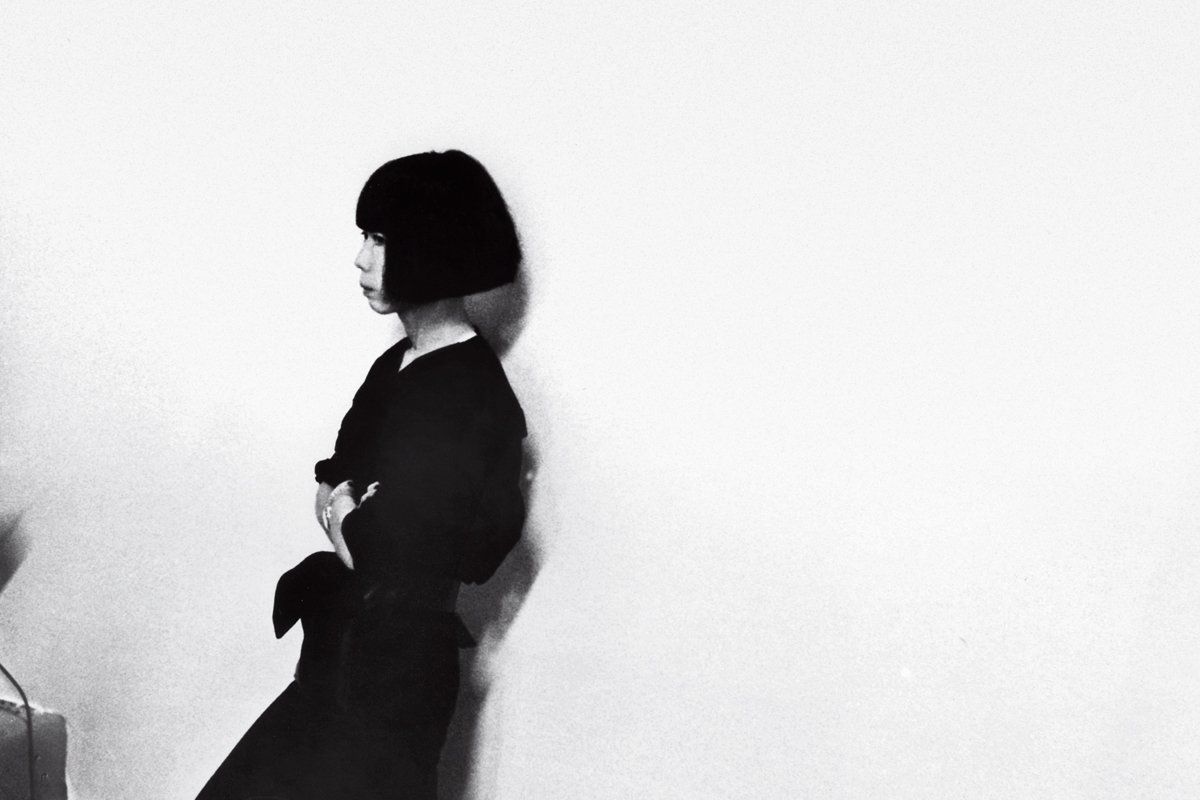
In a culture that presumes a universal addiction to fame and notoriety, Rei Kawakubo—one of the most admired and influential designers within the fashion industry—steadfastly abstains. She does not take a bow at the end of her runway shows. She does not tweet. Her public utterances are miserly at best. This elusiveness has heightened her reputation as a fashion oracle, someone who speaks in riddles wrapped in metaphors and whose clothes are like premonitions in boiled wool and nylon.
Her clothes leave fashion novices exasperated but make true believers swoon. She debuted in Paris in 1981 during the height of the Dallas and Dynasty period of ostentation and soon caused a stir with a collection of deconstructed "bag lady" rags called "Destroy." She has made dresses that are all front and no back, that are two-dimensional instead of three. In one of her most audacious collections, 1997's "Dress Meets Body, Body Meets Dress," she masterminded a series of garments fitted with padded protuberances that transformed the classic hourglass shape into something amorphous, beastly ... and mesmerizing.
And in 2009, one of her garments upended political Washington: former White House social secretary Desirée Rogers arrived for the Obamas' first state dinner wearing a gown in which strands of pearls lay trapped between sheer netting and a pale peach tube. The dress was a rebellious snub of political hierarchy and protocol. Rogers left the White House soon after.
Kawakubo, 69, is a petite Japanese woman with a dark-haired bob, whose resting expression is at once somber and ferocious. Once referred to as fashion's "nun," she dresses in an ascetic palette of black and white—one that gives no indication of the daring creations on her runway.
"I begin every collection, every aspect of design for Comme des Garçons, from zero. I want to try to make something strong that didn't exist before," says Kawakubo through a translator. "By the very nature of how I work, I cannot be in any dialogue with the fashion industry or the public, or let myself be influenced in any way, by anyone or anything."
Her collections are personal soliloquies; she is not interested in your neurotic body issues or your professional angst. "I do not work from a desk or do any sketches or look at fabric swatches. The process of creation for me is a constant act achieved through merely living my daily life. It's because I live, go shopping, read the newspaper, work in the stores, run the company, that I am able to find something."
This self-described conjuring-of-something-from-nothing makes Kawakubo a designer's designer. "I admire and worship her," Marc Jacobs has said.
This summer, as the Council of Fashion Designers of America celebrates its 50th anniversary, it honors Kawakubo with its international award. Film director John Waters, a besotted customer, will present the award on June 4 in New York.
Designers with rarefied points of view often see business as the enemy of creativity. They have little patience for the masses. But Kawakubo attacks the commercial aspects of fashion with the same imagination she applies to the runway. "I design the company ... so this includes not only the clothes but the way of [doing] business," she says. "I am always looking for business adventures that are new and interesting."
The privately held Japan-based company, which Kawakubo runs with her husband, Adrian Joffe, reports $200 million in annual revenue. They are not, of course, selling that many lumpy dresses. "There's never going to be more and more people buying the main line," says Joffe, who is the charming and ebullient ambassador that his wife is not. "We have to grow horizontally."
Since the company's founding in 1969, it has expanded to include menswear, as well as an assortment of less expensive lines and fragrances. Fashion's notorious sphinx reaches out to a mass audience through the "Play" T-shirt line, which has been embraced by, among others, the hip-hop community. "The absence of a concept is the concept itself," Joffe says.

Comme des Garçons ignited the enthusiasm for pop-up shops in 2004. And after 47 guerrilla boutiques explicitly run by nonfashion entrepreneurs such as linguists and graphic artists—in markets as diverse as Berlin and Reykjavik—the company dropped the concept in 2009. It operates the multibrand Dover Street Market, and its Trading Museum merges a museum with a retail store. Kawakubo caused riots with her limited-edition collection for H&M. The brand entered the "green" housewares business with Good Design Shop. And it tweaked the standard warehouse sale with its Market Market shopping festivals during which it sheds old merchandise. Last year's New York blowout—with food and entertainment—netted $1.7 million in four days.
Kawakubo has said that she became a designer "to make a living." Hers was not a vanity project, but it remains highly personal. Her entrepreneurial dreams are not limited to selling to a few well-heeled artists. But her point of view remains undiluted. She pursued success, while dodging celebrity.
"Comme des Garçons can never, by its nature, appeal to everyone. It would be the end of CDG if it ever did," Kawakubo says. "We have to maintain the paradox of creation [that will never] be understood by everyone—and yet through its indirect power, we are able to continue."
Uncommon Knowledge
Newsweek is committed to challenging conventional wisdom and finding connections in the search for common ground.
Newsweek is committed to challenging conventional wisdom and finding connections in the search for common ground.





